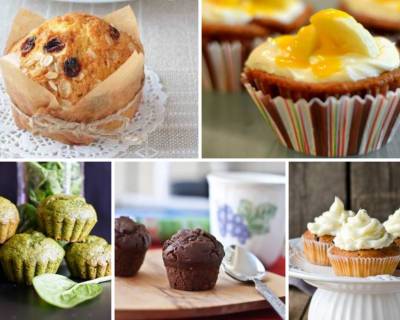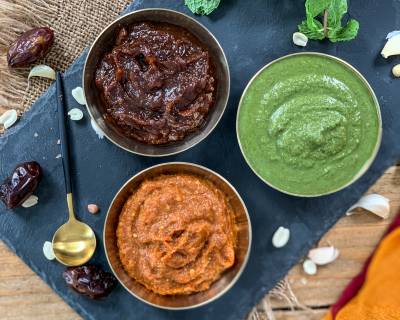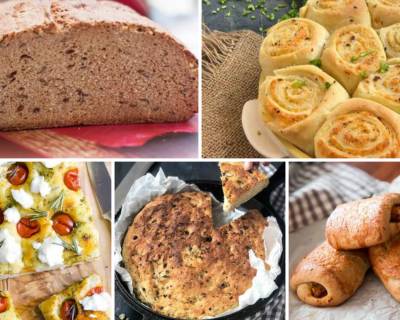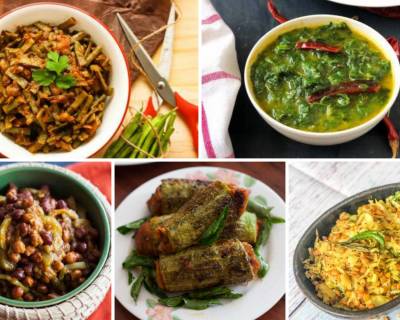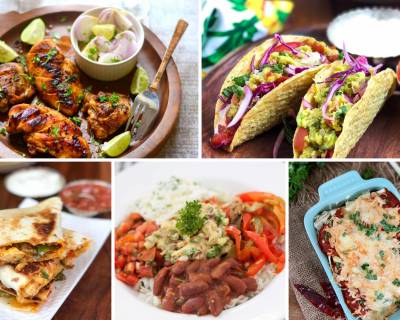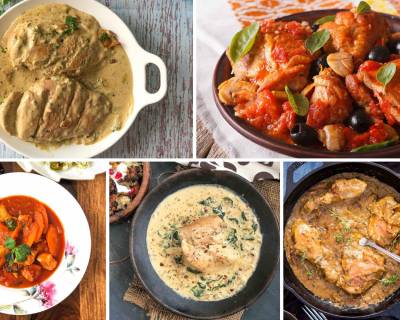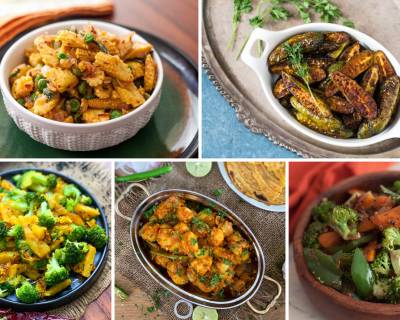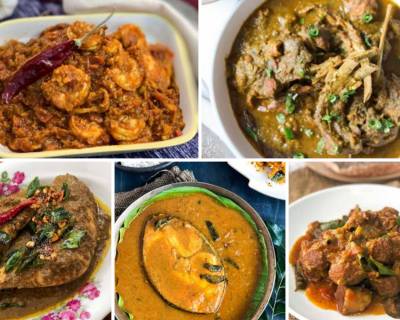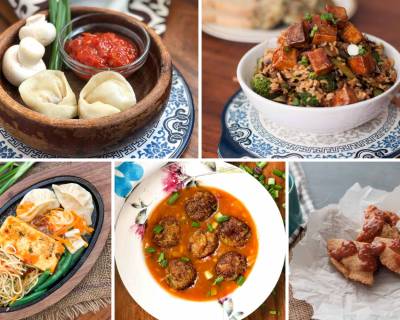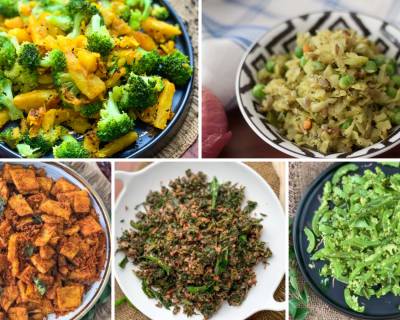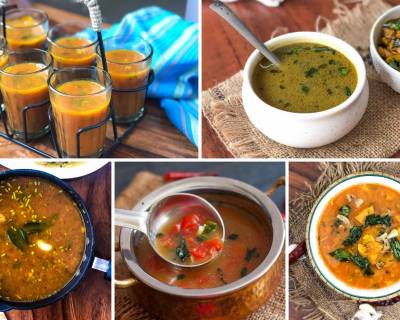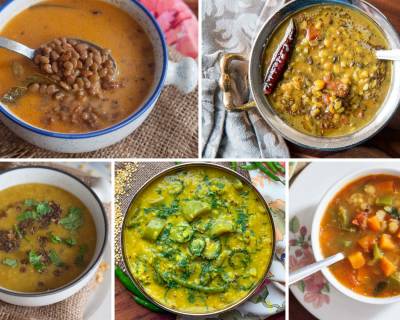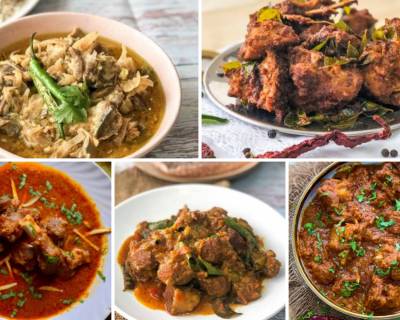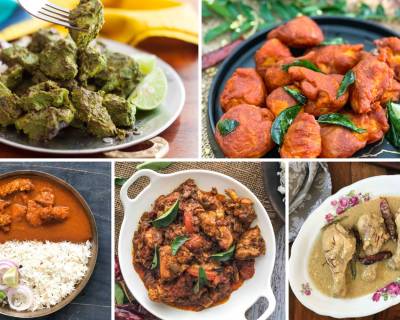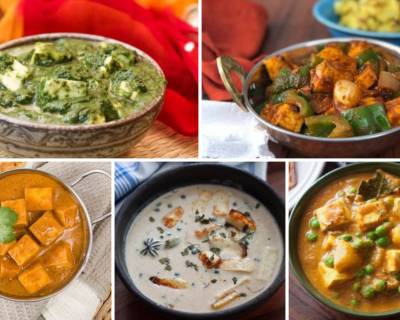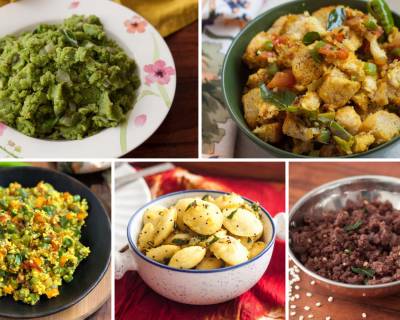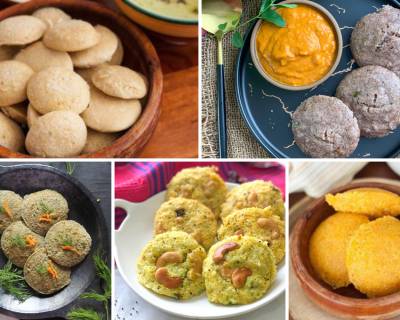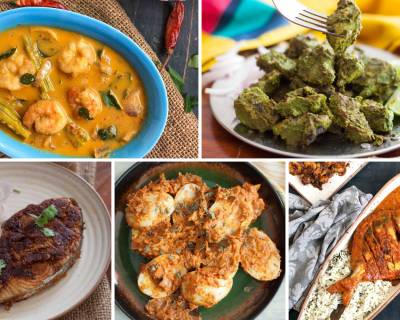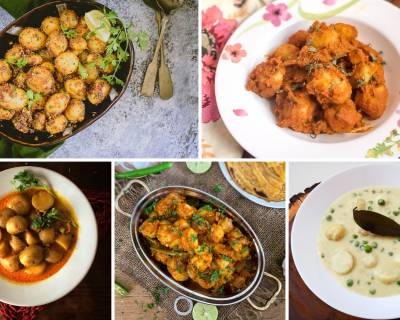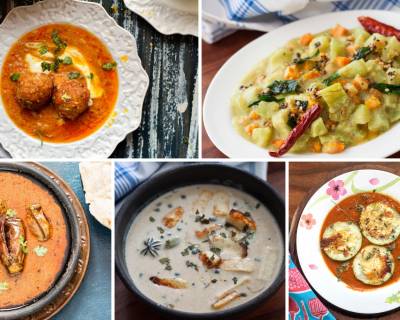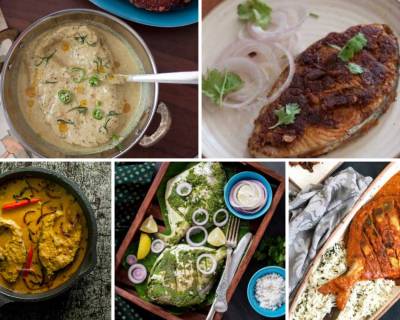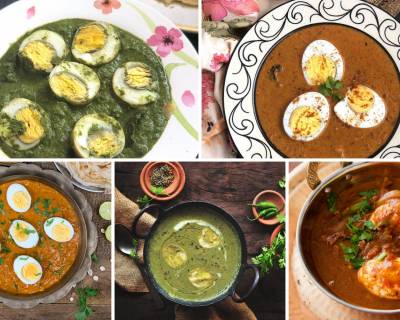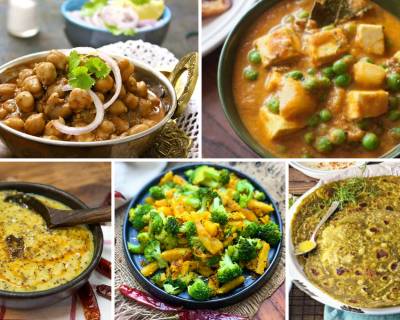Recipe Collections
43 Cupcake Recipes Perfect For Evening Snack - Muffin Recipes | Tea Cakes
Cupcakes and muffins are a perfect baked treat that everyone loves. In this article you can find various recipes of cupcakes and muffins that you can easily bake in your home. These recipes can be made by an experienced bakes or a beginner baker.
3 Delectable Chutney Recipes That Can Be Served Along With Chaats And Snacks
Chutney, a very popular Indian condiment that is served along with the meals. There are many types of Chutneys made in Indian which varies in taste depending upon which state of India it belongs too. There are many South Indian Chutneys like Coconut Chutney, Chana Dal Chutney, Tomato Chutney etc which is served along with Dosa and Idli for Breakfast, but then there are chutneys like Lahsun Ki Chutney and Hari Chutney which are very popular in North Indian households.
63 Best Homemade Bread Recipes For Mealtimes
Breads are a favourite among all and there are so many varieties of bread available in the market. It is often eaten for breakfast lunch or dinner. Bread is the go to carbohydrate to kick start your day. It often slathered with butter or jam or made into a sandwich. Breads are also often eaten along with a gravy based dish or served along a soup. It is simple to make breads at home and here we have bread recipes from across the globe which are simple to follow and will trun an ameture baker into a world class bread baker. Each recipe has simple bread making techniques that will allow you to make excellent bread at home with very little effort.
138 Healthy North Indian Sabzi Recipes For Diabetics
Having diabetes does not mean that you need to give up eating your favourite food or snack. It is about eating in portion and having a balanced diet. Usually in India, we end up having a large serving of rice or chapati along with our meals but what we really need to do is reduce the amount of carbs we are eating and serving a larger portion of vegetable and protein. To help you cook healthier and plan your meals better, here we have a collection of North Indian Dry Sabzi that you can serve for your Main Course and eat along with chapati or phulka or millets and a dal by the side.
23 Lip Smacking Mexican Recipes For Weekend Dinners
The cuisine Mexican, comes from Mexico which started almost 9000 years ago. It is also one of those cuisines which is loved all over the World and many restaurants have opened in the recent times who serves authentic Mexican food. The staples in this cuisine are corn, beans, squash, avocados, tomatoes, sweet potato, chilli pepper etc. When it comes to India, the taste and flavour of these Mexican dishes are slightly changed to suit the Indian palates.
12 Continental Chicken Gravy Recipes For Dinners
If you are craving Continental Food at home and do not want to order in, then try these delicious and restaurant worthy Continental Chicken Gravy recipes that you can make easily at home to satisfy your cravings. You can have these with a delicious freshly baked bread or herbed rice on the side for a wholesome meal.
112 Quick & Easy North Indian Dry Sabzi Recipes Under 30 Minutes
Healthy, Delicious, and Time-Saving Recipes for Busy Mornings and Weekends: Preparing a healthy and delicious meal for your lunch box can be challenging, especially during hectic weekdays when you're rushing to work or getting the kids ready for school. Even on weekends, we often seek easy-to-make recipes so we can relax and enjoy quality time with family. To help you in these situations, we've curated a list of lip-smacking North Indian Sabzi recipes that you can whip up in under 30 minutes.
108 Delicious South Indian Non Vegetarian Recipes (Chicken, Mutton & Fish )
India is such a vast continent with an equally vast culinary heritage. Apart from the wide varieties of vegetarian dishes, India also has some mouthwatering non vegetarian Dishes that are full of flavour. When it comes to South Indian Non vegetarian Recipes, you can find that there are many delicacies of seafood, chicken and mutton.
South Indian states include the states of Andhra Pradesh, Karnataka, Kerala, Tamil Nadu, and Telangana as well as the union territories of Pondicherry, Lakshadweep and Andaman. These states are surrounded by sea and have a vast coastline and hence you will find many mouthwatering seafood dishes.
122 Chinese Recipes For Dinners & Parties | Indo Chinese Recipes
Chinese cuisine is beloved by all ages, from kids to adults, for its rich flavors and diverse dishes. Indo-Chinese cuisine blends traditional Chinese recipes with Indian spices, catering perfectly to the Indian palate. Popular dishes like Manchurian and Hakka Noodles have become household favorites, available in restaurants across India.
136 Quick & Easy South Indian Dry Vegetable Recipes Under 30 Minutes
It is difficult to make elaborate dishes everyday especially during the week. These quick 30 minutes south indian dry vegetable recipes are high on flavour and makes a great side dish with any South Indian meal of Sambar, Rasam, Kuzhambu, Rice etc or it can also be served along with any Indian bread like Phulka, Paratha etc.
90 Best Diabetic Breakfast Recipes That Are Healthy & Nutritious
Many diabetics struggle everyday to keep their blood sugar in control. They ponder about what they should eat and what they should not eat so that their blood sugar levels do not spike. Many believe that if you eat less or skip a meal it will help with controlling their diabetes. This is the biggest misconception and if you are a diabetic you should never skip a meal especially your breakfast.
48 Comforting Rasam Recipes From South India For Your Everyday Meals
South Indian cuisine, is of those cuisines that is famous all over the world. Every restaurant in India will have the Idli, Dosa and Chutney option in their Breakfast menu. Other than these Breakfast dishes, there are two other dishes, Sambar and Rasam which are very famous and is made in almost all the South Indian households along with Steamed Rice. Here, we will talk about different kinds of Rasam made in South India.
24 No Onion & No Garlic North Indian Dal Recipes For Lunch Or Dinner
Dal is one of those dishes, which is made in every Indian household for their everyday meals. There are different types of Dals that you can make such as - Moong Dal, Toor Dal, Arhar Dal, Chana Dal, Urad Dal, Masoor Dal, Kulith etc. In North India, most of the Dals uses Onion and Garlic which gives it a distinct flavour and taste. But there are some delicious Dals, which are made without the use of Onion and Garlic and the flavour is given from Ginger or the Whole Spices. You can also make these Dals during your fasting days.
70 Mutton Recipes Perfect For For Lunch, Dinners & Parties
If you are looking for Mutton Recipes to make for your weekends meals, but have not found anything interesting, then look no further and check out our collection of tried and tested Mutton Recipes. Here, we have a list of tender, succulent and flavourful Mutton Curry and Mutton Dry Recipes from across India that will surely satisfy your taste buds..
110 Chicken Recipes You Will Love From Delicious Chicken Curry & Dry Chicken Recipes
When it comes to Non Vegetarian food, Chicken is one of those ingredients which is widely used all over the world. You can make so many dishes using Chicken such as Gravies, Starters, Pizza, Pasta, Salad, Tacos etc. But here, we are talking about Indian food, which is loved by everyone. From lip smacking Gravies to delicious Starters, chicken can be used anywhere. Chicken doesn't have any flavour of its own, therefore it takes up the flavour of other ingredients used to make the dish very well.
100 Paneer Recipes That Are Simple, Easy & Delicious To Make
Indians have immense love for soft textured Paneer, especially Vegetarians! Paneer can be used to make different dishes such as Palak Paneer, Kadai Paneer, Matar Paneer, Paneer Butter Masala, Paneer Tikka Masala, Shahi Paneer and Paneer Jalfrezi. You will find these delicious Paneer dishes on most Indian restaurant menus.
Paneer, which is also called as Cottage Cheese is the most common type of cheese used in the Indian subcontinent especially in North India and Eastern India. In the Eastern subcontinent, it is referred to as Chenna. Paneer is a good source of Protein, Vitamin B12, Potassium and Selenium, and a very good source of Vitamin D, Riboflavin, Calcium and Phosphorus, therefore it is very important to include it in your everyday meals.
42 Upma Recipes For Your Breakfast That Can Be Made In Jiffy
Breakfast being the most important meal of the day should be healthy and nutritious, because it is the first meal of the day that will provide us energy to go through the remaining day. We have to make sure that it contains the right amount of nutrition that is required for our body. But, in our busy schedule, we end up making something that is quick, easy and lacks nutrition. For such days, we need some Breakfast ideas that are easy to cook and also tick marks the nutrition part. One of such Breakfast is UPMA.
Easy To Make Soft Idli Recipes That You Can Relish For Your Everyday Breakfast
Piping hot Idli served along with Sambar and Chutney is the ultimate South Indian Breakfast. Most people in India head out to a South Indian breakfast joint over the weekend to get their idlis craving satisfied. Idlis are super simple to make at home and if you love spongy idlis, then go ahead and try some of our Classic Homemade Idli Recipes, Instant Idli Recipes, Rava Idli Recipes and Millet Idli Recipes for breakfast. One thing is for sure, with our various Idli recipes you can never get bored of idlis.
117 High Protein Indian Non Vegetarian Recipes For Body Building & Weight Loss
Today, most of us are focusing to lead a healthy Lifestyle, that means make changes to our eating and exercising patterns. Along with daily workout, it is also very important to eat right to get the result. And when we talk about eating right, we mean to eat the food that provides us all the necessary nutrients. One more important segment of healthy eating is Portion Control. What is Portion Control? Well, it means having small amount of different dishes in your plate so that you get all the necessary nutrients.
30 Baby Potato Recipes Will Make A Perfect Sabzi With Roti
Potatoes are ranked among the top most favourite vegetable that people like to eat around the world. They are so versatile that you can pair them with different spices and there are endless ways in which you can prepare recipes using potatoes. Potatoes are the staple food in many parts of the world and is the fourth largest grown crops.
204 No Onion No Garlic Gravy Recipes From Across India
Onion and Garlic, are two very common ingredients that is used in Indian Cooking. Addition of onion and garlic in any recipe makes it more flavorful and delicious. But, there are many people who don't prefer using these ingredients in their cooking, especially the Jain community due to religious reasons. Some might not use because of allergy issues or some people might not like the taste and texture of the same. We also avoid food with onion and garlic during our Fasting days.
64 Indian Fish Fry And Curry Recipes That You Won't Be Able To Resist
India is a country with vast coastlines and many rivers flowing through it. There is an abundance of sea food variety available in the markets and everyone love fresh fish either made into a curry or fried. Each fish has its own flavor and texture and that is the reason why fish is so popular. Fish is not only tasty, but healthy too. Fish is a rich source of Omega-3 Fatty Acids which keeps our heart and brain healthy.
Fish is often called as "BRAIN FOOD". It is high in Protein and Vitamin D. There is a great diversity found across India when it comes to making the same fish. Here we have a wide variety of Fish Curry and Fish Fry Recipes, that you can relish for your everyday meals or you can also prepare them for your house parties or family get together.
26 Mouth Watering And Easy To Make Egg Curry Recipes From India
Egg, a great source of Protein is a must in all the Egg eaters diet. It is a great way to include protein in your everyday diet and it also keeps you filled for a longer time. Not only Protein, Eggs are rich sources of selenium, vitamin D, B6, B12 and minerals such as zinc, iron and copper. There are many ways that you can eat an Egg for your breakfast, lunch and dinner. The healthiest way is to boil the eggs and eat it for breakfast.
273 High Protein Indian Vegetarian Main Course Recipes For Body Building & Weight Loss
Protein is the building block for our body. It is an important component of every cell in our body. Our body repairs tissue with the help of proteins. Our bones, muscles, skin blood, nails and hair are mainly made of proteins. Protein is a macro-nutrient that means that our body needs a relatively large amount of protein for normal functions. And unlike fats and carbohydrate the body does not store protein and so we need to have a protein rich diet to be healthy. Depending on age and sex, a healthy adult needs about 50-60 grams of protein everyday. For a body builder it is around 120 grams. The more active you are, the more proteins you need.
